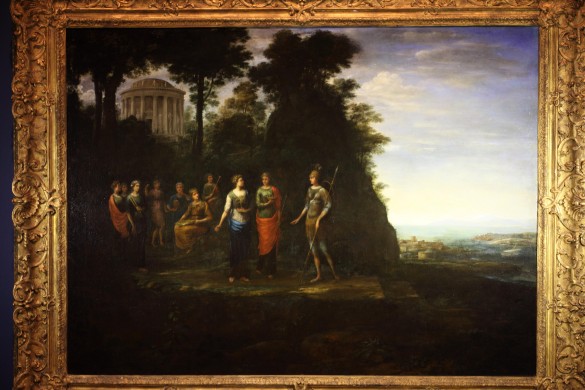Written by Jocelyn Boigenzahn, Curatorial Intern

Claude Lorrain (French, 1600 – 1682), Minerva Visiting the Muses on Mount Parnassus, 1680, oil on canvas, 57 x 76 in, Bequest of Ninah M. H. Cummer, C.0.110.1.
Claude Lorrain was an artist of the Baroque era active in Italy and is admired for his achievements in landscape painting. His actual name was Claude Gellee, but he is better known by the province in which he was born, the town of Chamagne, Vosges in Lorraine – then the Duchy of Lorraine, an independent state until 1766. In 1627 Lorrain returned to Rome. Two landscapes made for Cardinal Bentivoglio while in Rome earned Lorrain the patronage of Pope Urban VIII.
In Rome, landscapes were not considered high painting until the mid-17th century. Pure landscape, like pure still-life or genre painting, reflected an aesthetic viewpoint regarded as lacking in moral seriousness. Rome, the theological and philosophical center of 17th century Italian art, was not quite ready for such a break with tradition.
Lorrain was aware of the position of landscape in Italian art and living in a pre-Romantic era, he did not depict uninhabited panorama that were to be esteemed in later centuries. Instead, he painted a pastoral world of fields and valleys not distant from castles and towns, often including demigods, heroes, and saints. The addition of mythological figures combined pure landscape with the revival of allegorical fantasy that became a central element of the Baroque period painting.


